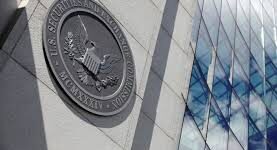Global stock indexes edged higher on Monday as investors digested comments from Federal Reserve policymakers while the euro fell against the dollar as business activity readings of the euro zone economy disappointed.
U.S. Treasury yields rose as bond investors continued to price out near-term recession in the world’s largest economy.
U.S. policymakers’ comments were in focus after the Fed last week began an easing policy with a half-point interest rate cut.
Minneapolis Fed President Neel Kashkari called the cut the “right decision” while Bank of Chicago President Austan Goolsbee said he expected “many more rate cuts over the next year.”
Atlanta Federal Reserve President Raphael Bostic said the U.S. economy is close to normal rates of inflation and unemployment and the Fed needs monetary policy to “normalize” as well.
The U.S. rate futures market has priced in 51% chance of a smaller 25-bp cut at the November Fed meeting, with a 49% probability of the bigger 50-bp easing, according to LSEG data. For the rest of the year, the futures market is implying cuts of around 77 bps.
The Dow Jones Industrial Average (.DJI), opens new tab rose 59.96 points, or 0.14%, to 42,123.32, the S&P 500 (.SPX), opens new tab rose 18.65 points, or 0.33%, to 5,721.20 and the Nasdaq Composite (.IXIC), opens new tab rose 49.35 points, or 0.28%, to 17,998.05.
U.S. stocks registered gains last week.
“It’s a little bit of a pause considering the exuberance of last week. There’s nothing economic right now that’s spooking the market other than the Fed going a little further than anyone expected,” said Phil Blancato, CEO of Ladenburg Thalmann Asset Management.
MSCI’s gauge of stocks across the globe (.MIWD00000PUS), opens new tab rose 2.75 points, or 0.33%, to 840.12. The STOXX 600 (.STOXX), opens new tab index rose 0.36%.
On the data front, a survey compiled by S&P Global showed euro zone business activity sharply contracted this month as the bloc’s dominant services industry flat-lined, while a downturn in manufacturing accelerated.
In contrast, U.S. business activity was steady in September, but average prices charged for goods and services rose at the fastest pace in six months, possibly pointing to an acceleration in inflation in coming months.
The dollar index , which measures the greenback against a basket of currencies including the yen and the euro, was little changed at 100.79, while the euro was down 0.25% at $1.1134. Against the Japanese yen , the dollar weakened 0.02% to 143.88.
U.S. yields on the long end of the curve – those from seven-year notes to 30-year bonds – climbed to three-week highs.
That further steepened the yield curve, a barometer of U.S. economic prospects, with the gap between two and 10-year yields hitting positive 17.9 basis points (bps). That is the widest since June 2022. .
The yield on benchmark U.S. 10-year notes rose 4.7 basis points to 3.775%, from 3.728% late on Friday.
Oil prices eased even as investors worried about supply after tensions in the Middle East escalated. U.S. crude fell 0.58% to $70.59 a barrel and Brent fell to $74.08 per barrel, down 0.55% on the day. Spot gold rose 0.34% to $2,630.79 an ounce.
Investors are weighing whether global monetary easing may have started too late to stop a slowdown from taking hold.
China’s central bank has lowered its 14-day repo rate by 10 basis points, days after disappointing markets by not cutting longer-term rates.
The Swiss National Bank meets on Thursday and markets are fully pricing a quarter-point cut to 1.0%, with a 41% chance it will ease by 50 basis points.


